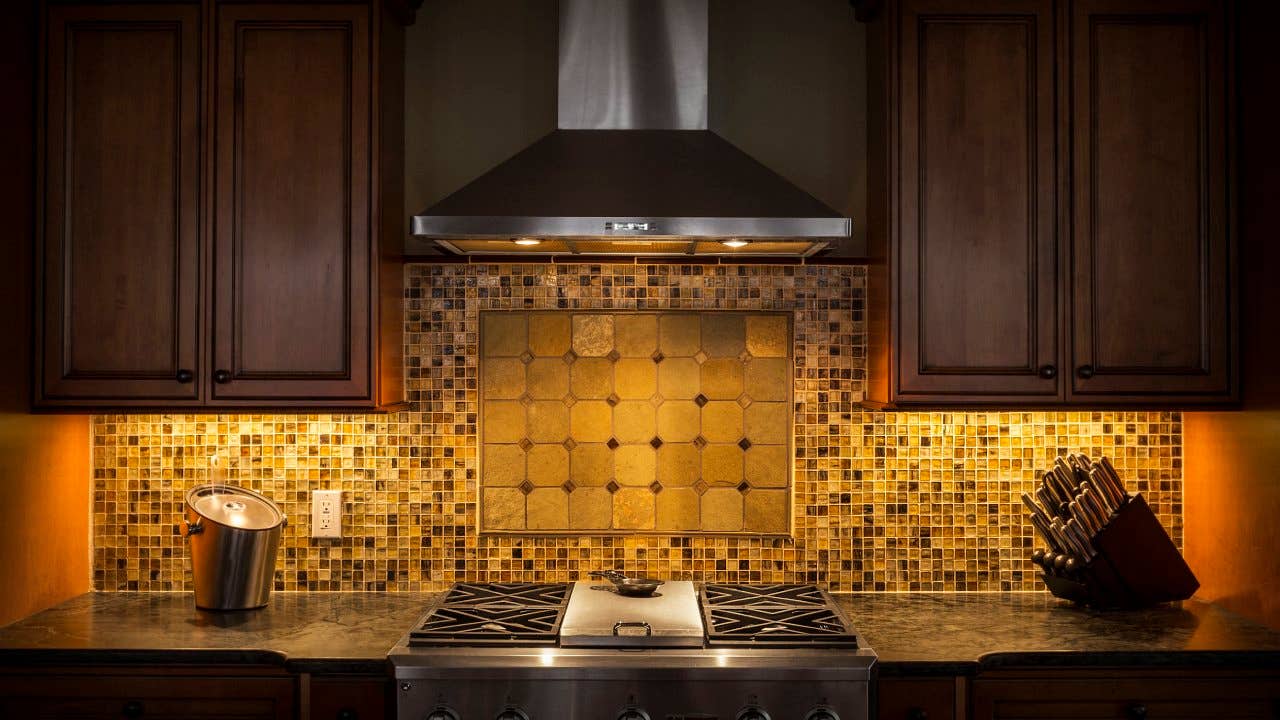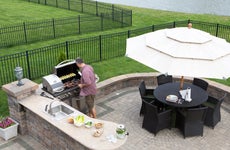How to ventilate a kitchen

The Bankrate promise
At Bankrate we strive to help you make smarter financial decisions. While we adhere to strict , this post may contain references to products from our partners. Here's an explanation for .
When you’re planning a kitchen remodel, you’re probably thinking about appliances, countertops and tiling. What might not come to mind immediately is ventilation. You’d be shocked to learn just how important it is, though. If you leave ventilation to an afterthought, you run the risk of running to circulation issues within your kitchen. Even worse, you may open your home to air pollution.
Kitchen ventilation is important to factor into any of your kitchen design ideas and renovations, and we’ll explain why — and, more importantly, guide you on how to achieve it.
What’s required in kitchen ventilation?
You know that when you cook food at home, grease and oil and fat has a tendency to end up just about everywhere. Just take a look at your stove after preparing a meal if you need a reminder. That includes the air, where particulates can linger and even create a coating on your countertops and cabinets. That is why ventilation is important.
So what exactly do you need to keep your kitchen ventilated? An exhaust system is a great place to start — but unless you live in California, it likely is not required. A kitchen exhaust system greatly reduces air pollution in your home, according to numerous studies. But if you don’t want to go for the full exhaust system, a range hood will often do the trick.
Range hoods
A range hood is what you’ll typically find over a stove. It contains a fan or a motorized blower that sucks up the air pollution caused by cooking. A proper range hood should be powerful enough to keep your entire kitchen clear of dangerous particulates.
Range hood capacity is calculated by determining the total heat output of the range itself, calculated in British thermal units (Btu), then dividing that figure by either 400 for continuously on fans or 100 for fans you can turn on and off. If that’s confusing, just know that a standard gas stove produces about 40,000 Btu, meaning your standard range hood should have a capacity of 100 cfm if it can be turned on and off or 400 cfm if it runs continuously.
For best results with a range stove that you can turn off and on, you’ll want to turn it on as soon as you start cooking and let it run throughout the process. You’ll also want to check the filter regularly to prevent build up. Also, if possible, avoid recirculating hoods, as they simply feed the air back into the room and have poor filtering systems by comparison.
Exhaust systems
Exhaust systems are more elaborate, but also more efficient. These systems suck up the air while you’re cooking and expel them through a ductwork system. A good exhaust system should be compliant with standards from the American National Standards Institute (ANSI) and the American Society of Heating, Refrigerating and Air-Conditioning Engineers (ASHRAE) to ensure both air quality and energy efficiency.
Exhaust systems provide a bit more flexibility in how you ventilate your kitchen. You can use a range hood, but you can also use wall mounts, under-mounts that go beneath cabinets, and downdraft systems that suck the air downward instead of upward.
These systems work by drawing air from other parts of the house to exchange the air being removed from the kitchen with fresh air. A good exhaust system should be able to perform five air exchanges per hour, meaning it’ll fully cycle out the air in the kitchen five times.
Other kitchen ventilation methods
While range hoods and exhaust systems are ideal options for kitchen ventilation, there may be situations in which they are unavailable or impractical. When that is the case, consider these kitchen ventilation alternatives.
Fans
Fans are useful tools for helping to keep your kitchen properly ventilated. Place a fan in your window and allow it to push out the polluted air and invite in fresh air to keep the room’s air cleaner.
Splatter screens
One way to keep the air clear is by not letting grease and other particulates get there in the first place. Cut down on the pollution that can make it into your kitchen’s airspace with splatter screens for skillets, pots and pans that can absorb grease and gunk.
Ductless range hoods
Ductless range hoods are not an ideal solution, as they simply recirculate air throughout the kitchen and are less effective filters of damaging particulate matter. However, if you don’t have any other option, a ductless range hood will work in a pinch.
Windows
Opening a window — if your kitchen has one — is a simple solution. It’s far from the most effective method, but letting in fresh air does make a difference.
Final word on ventilating a kitchen
When possible, a kitchen exhaust system is the best available option for keeping the air in your kitchen clean and free of air pollution. However, if it’s too expensive or too difficult to install in your space, a range hood will also provide much needed kitchen ventilation and can fit in most kitchens. Regardless of the option that you choose, make sure you consider the importance of kitchen ventilation when you are brainstorming kitchen design ideas with an interior designer or a contractor.
Related Articles




Small kitchen ideas: designs that make them look bigger and function better